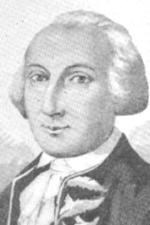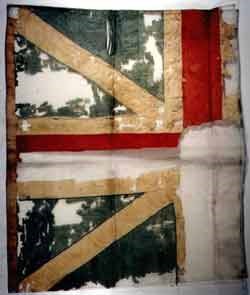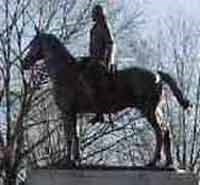
What historical ties does a Spanish governor of Louisiana have with British St. Augustine? What ties unite Pensacola, Florida; Mobile, Alabama; Baton Rouge, Louisiana; and Natchez, Mississippi? During the American Revolution, these towns, like St. Augustine, were all part of British Florida, and all but St. Augustine were captured by General Bernardo de Gálvez, the governor of Spanish Louisiana, and his Spanish armies. Does this come as a surprise? We hear a lot about Lafayette and the French aid to the American colonies, but few people know that Spain was involved as well. So, who was General Gálvez, and what role did the Spanish play in the American Revolution? Bernardo Vicente Apolinar de Gálvez was born in 1746 in Málaga, Spain, the son of a career military man. Also choosing a military career, sixteen-year-old Bernardo participated in his first campaign against Portugal during the conflict known as the Seven Years' War in Europe and the French and Indian War in North America. Over the next fourteen years, Gálvez gained further valuable military experience fighting the Apaches in New Spain (today's Mexico and southwestern US) and another posting in North Africa where he proved his valor when he refused to abandon a position about to be overrun by the enemy, even though he was badly wounded. At age twenty-nine in 1776, Bernardo de Gálvez was appointed governor of Spanish Louisiana. (In 1762, nearing the end of the Seven Years' War, France ceded Louisiana to Spain in a secret treaty.) His mission, as top military and civilian authority of this land which stretched from the Mississippi River to the Rockies, from the Gulf to Canada, was to deal fairly with the French Creole population, promote commerce, fight smuggling, cultivate friendship with the Indians, build up the population, and in case of war against Great Britain, he was expected to attack and take British West Florida, all with only 500 soldiers. Gálvez Assists the American Colonies In August 1779, Spain finally declared war on Great Britain and Gálvez was free to act openly. He knew that his best chance of success was to strike first by surprise. Within a month he had captured all four British forts in the lower Mississippi including Baton Rouge and Natchez. He captured 550 enemy soldiers and two naval vessels, one of which was captured from land. (At one point, the British ship had to pass through a narrow channel, and the Spanish jumped aboard.) He did this all without suffering a single defeat. His success was even more remarkable because a hurricane had sunk his supply ships. The next March he moved against the seaport of Mobile. Again, his fleet wrecked at the mouth of the bay and most of his supplies were lost. However, Gálvez figured that since they were there, they might as well fight. When he learned that British reinforcements were coming from Pensacola, he pressed his siege, and Mobile surrendered in less than a day. The British reinforcements were so devastated by the news that they turned around in retreat 
On to Pensacola Gálvez knew that the British fleet was on its way, so he decided to take the matter into his own hands. He took his own four ships, hoisted his personal flag in the lead ship, stood on the prow with his sword raised, and ordered a 15-gun salute fired as he led his ships through the pass. When the rest of the fleet saw this daring move, they urged the admiral to give the order to follow. Still, Irazabel hesitated. Finally he told the other captains, "Do whatever you want." The other ships followed Gálvez. Irazabel returned to Cuba and was never heard from again. After two months of fighting, the British finally surrendered in May 1781. The Battle of Pensacola was one of the longest battles of the American Revolution; yet, it rarely appears in our history books. In July 1781 British troops began to arrive in Yorktown, the final engagement of the war. Think how much impact Gálvez and his troops had. Not only had he kept the British occupied on a second front throughout the war, but also imagine how much impact the loss of Pensacola had on the number of troops and ships the British could send to Yorktown. Imagine what course the American Revolution might have taken without the help of this able Spanish general. Gálvez had proved himself an able commander and leader. He led international forces during his campaigns to help the Americans. Along with professional Spanish soldiers, he led French, German, and Native American militia from Louisiana and black, white, and mestizo militia from Cuba, Mexico and elsewhere in the Caribbean. An Irish regiment and an Italian regiment, both in the Spanish service, also were part of his troops. 
Sculpture by Juan De Avalos Recognition |
Last updated: February 12, 2025
